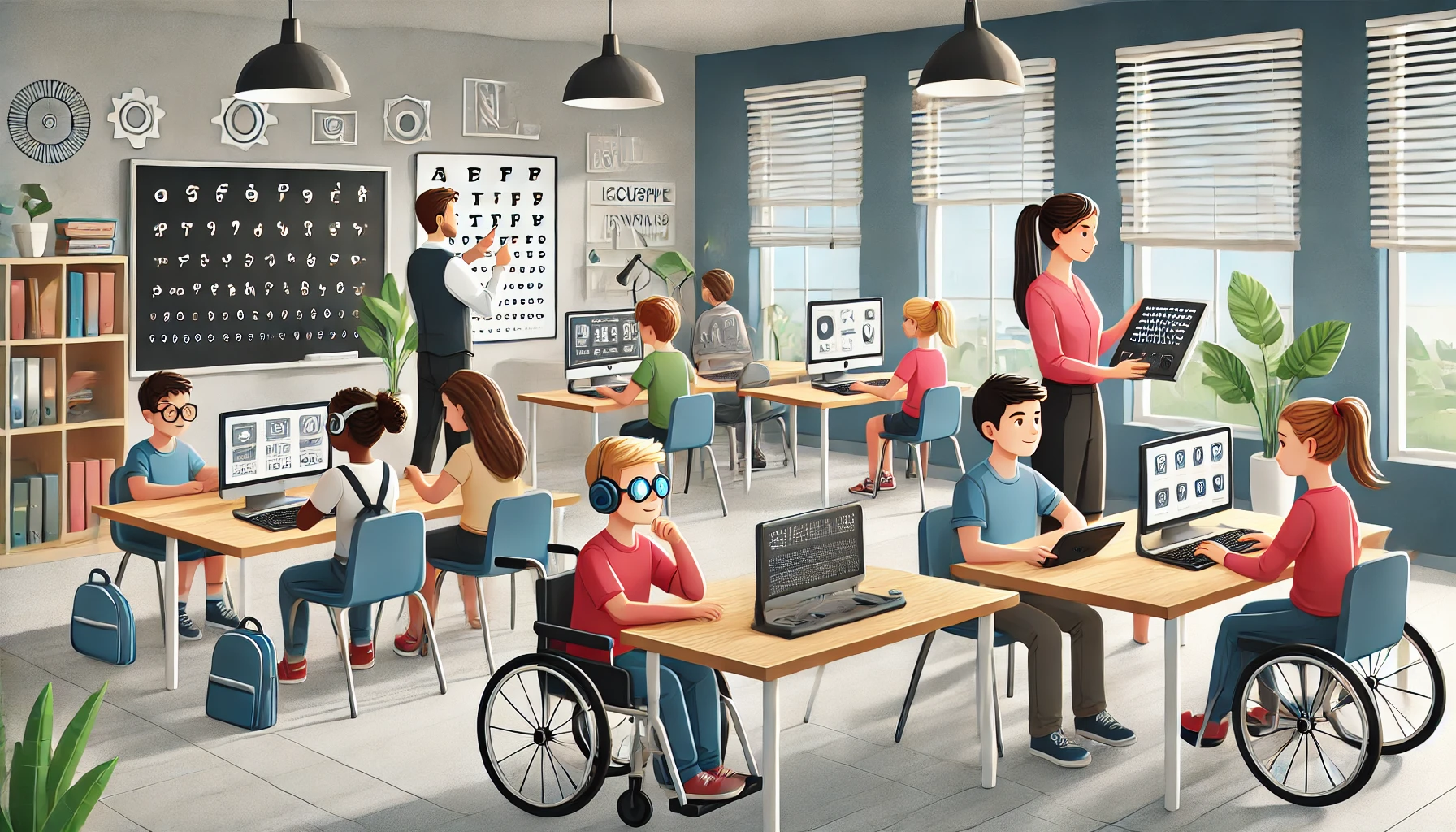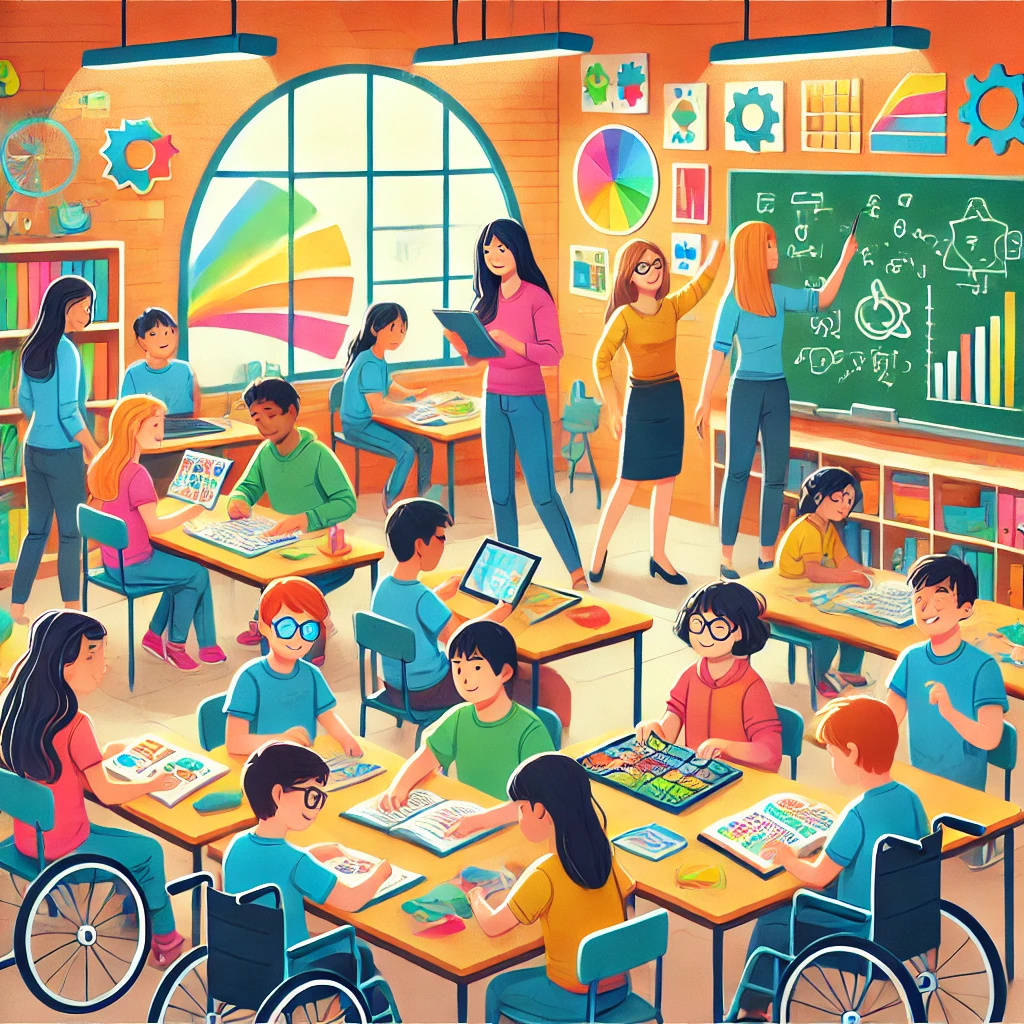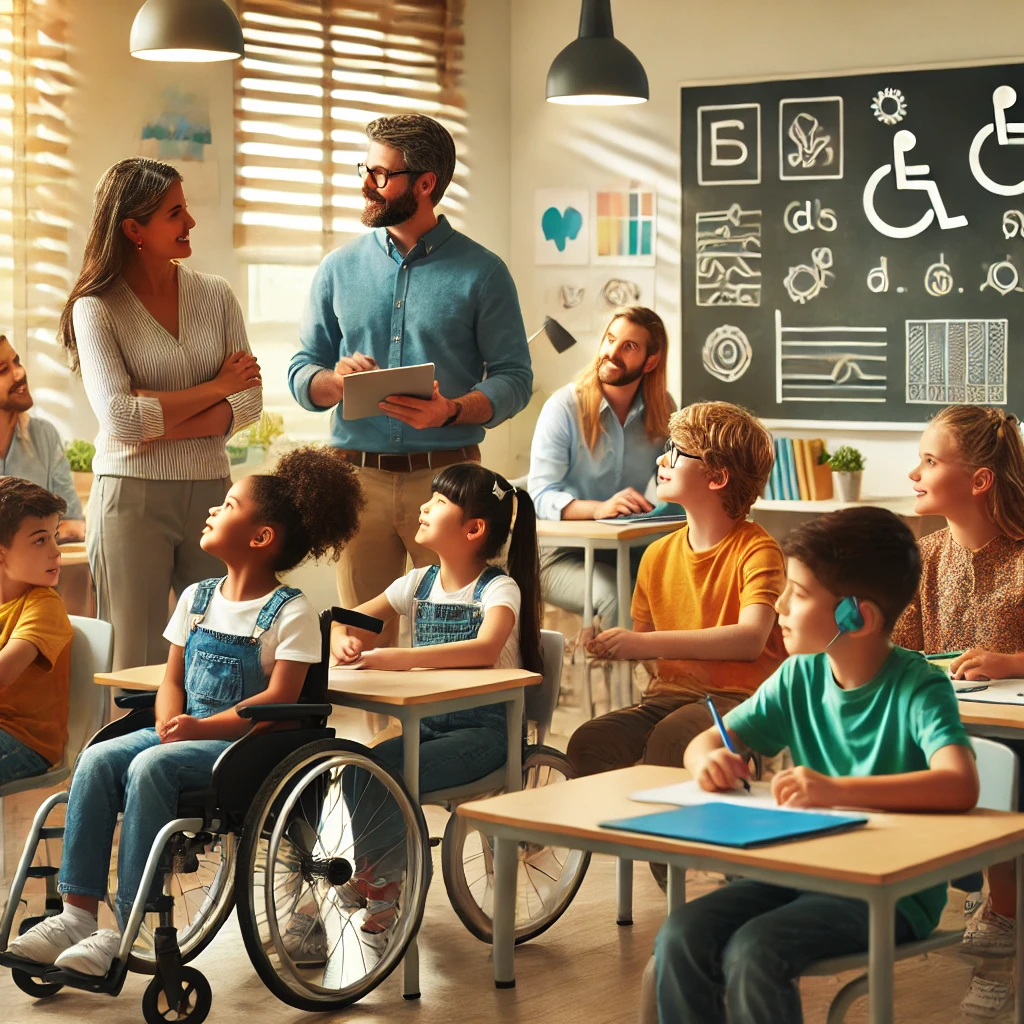Importance of Inclusive Education
In the arena of inclusive education, it’s all about welcoming every student, disabilities or not, and making sure they all get a fair chance to shine. This kind of learning environment is key to helping kids grow in school and on the playground. It builds their confidence and self-esteem, giving them the courage to stand tall.
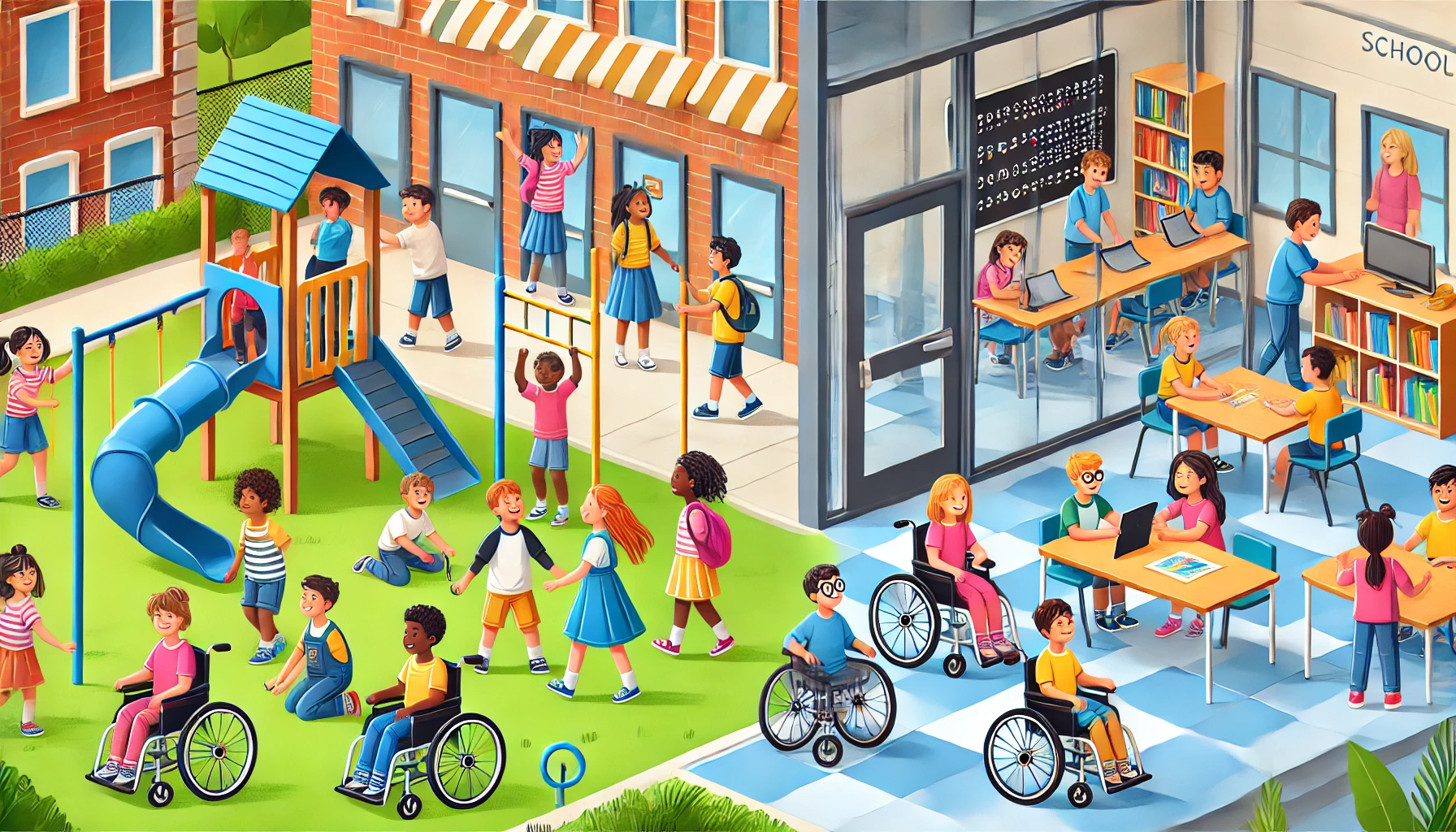
Academic and Social Growth
For students with disabilities, inclusive education is like a double whammy: good for the brain and the heart. Putting all kinds of students together in one classroom lets everyone learn the same stuff. Kids interact, chat with buddies, and dive into classwork, which beefs up both their smarts and their social skills (Easterseals Arkansas). This setting is like a social sandbox, where students develop connections and learn the ropes of real-world interaction.
Confidence and Self-Esteem Boost
One of the biggest wins of inclusive education is how it pumps up the confidence and self-esteem of students with disabilities. Being part of a classroom, where their needs are met with care, gives students a real sense of belonging. Feeling included lets them flex their learning muscles and mix with their mates, making them feel like they’re truly part of the gang.
An inclusive learning space is like a big hug for everyone. It celebrates each student, no matter their strengths or struggles. This atmosphere not only uplifts those with disabilities but also creates a better, kinder school vibe for everyone. To get the full scoop on why inclusive classrooms rock, check out our article on the benefits of inclusive education.
By pushing for these inclusive education practices and embedding acceptance and support into school culture, educators can light the path for brighter futures and stronger self-worth amongst all students. Working together, teachers, parents, and caregivers help cultivate classrooms where diversity is honored, and every student gets the chance to soar.
Advantages of Inclusive Education
Inclusive education is like hitting a jackpot, especially when it comes to building empathy, honing social skills, and giving school culture a happy makeover.
Fostering Empathy and Social Skills
At the heart of inclusive education, lies its knack for nurturing empathy and boosting social skills in students. By bringing students with disabilities into the mix of regular classrooms, everyone gets a chance to connect and learn from one another. This mix-and-mingle setup helps students who don’t have disabilities to get a fresh and real take on other people’s struggles, viewpoints, and strengths.
Empathy grows through these personal chats and teamwork, teaching students to value and respect all kinds of differences. Hanging out with classmates who have different needs can teach skills like patience, acceptance, and how to talk and listen well. These nuggets of wisdom do more than boost grades—they gear students up for the real world, making them more open-minded and thoughtful citizens.
Enhancing Overall School Culture
Alongside growing empathy and social smarts, inclusive education changes up the school vibe for the better. Welcoming a range of backgrounds and abilities inside school walls makes for a warm and encouraging space where everyone wins—students, teachers, and parents alike.
When schools commit to these approaches, they often see a cultural shift. Busting bullying, cherishing differences, and elevating empathy leads to an environment rich with respect, inclusivity, and patience. Students start feeling they matter, which instills a strong sense of belonging and school pride.
On top of that, schools big on inclusivity witness fewer discipline problems and see kids missing fewer days. Feeling valued and part of the gang, students are more likely to participate and shine academically and emotionally. Parents dig it too—knowing their kids have a supportive spot where they can truly blossom is comforting.
All in all, the perks of inclusive education stretch beyond hitting the books. They help shape key life skills, spark empathy, and nurture an open-armed, feel-good school climate that lifts the entire educational community.
Roles in Inclusive Education
In the world of inclusive education, parents and teachers play essential roles in creating a welcoming environment that nurtures every child’s confidence and development, especially those with special needs.

Parent Advocacy
Parents are tireless champions for their kids’ rights in schools. Advocating for the right programs, support, and resources isn’t just a duty—it’s a lifeline for their children’s diverse learning needs. By keeping close ties with school staff, parents guarantee their kids get the much-needed support for both academic growth and social interaction.
Parent advocacy doesn’t stop with personal action. It reaches into broader efforts that shake up educational policies, aiming for inclusivity for all students. When parents speak up, share their stories, and join forces with school leaders, they help build a kinder educational setting where kids’ self-esteem and well-being can flourish.
Teacher Training in Inclusive Practices
While parents push the needle, teachers are on the frontline of making inclusive education work. They dive into special training focused on inclusive methods like Universal Design for Learning (UDL). This training gives them the know-how to craft learning spaces that respect each student’s unique abilities and challenges.
With inclusive strategies in hand, teachers make classrooms safe havens, encouraging participation from every student, special needs included. Respect, empathy, and teamwork become part of the classroom culture, helping students feel appreciated and confident as they learn.
Teachers shouldn’t sail alone, though. Teamwork with parents and other stakeholders to set dynamic learning goals that tap into each student’s talents is a must. This collaboration shapes a learning space where every child can grow both academically and personally.
In wrapping up, the teamwork between parents and teachers is the foundation of creating inclusive schools where all kids feel seen, supported, and encouraged to shine. Through advocacy, training, and collaboration, a culture of acceptance and growth takes root, offering students a better shot at reaching their potential.
Challenges in Inclusive Education
When it comes to inclusive education, making sure every student—special needs or not—gets a fair shot at learning is no small feat. Among the hurdles are negative attitudes and biases, plus a serious lack of resources.
Negative Attitudes and Biases
Imagine walking into school and sensing that people think you can’t succeed just because you’re different. That’s the vibe many students with disabilities feel thanks to stereotypes, discrimination, or plain misunderstandings about their abilities. These attitudes can throw up walls, making schools less welcoming places for everyone.
Fixing this isn’t rocket science but it does take some elbow grease. Teachers, parents, and caretakers need to actively spread positivity and respect for all kinds of different folks in their schools. When they push back against old stereotypes, schools become friendlier, more inclusive hangouts for all students, letting everyone know they’re valued and backed up.
Resource Limitations
On top of the attitude issues, another big roadblock is not having enough stuff—money, teachers, or specialized tools, you name it. Schools need these to properly help kids with disabilities learn just like everyone else. Many schools are stretching what they’ve got, meaning some students might not get what they need to succeed.
Schools have to be loud about needing more funding, staff, and facilities. They can’t do it alone, so linking up with community groups, local government, and advocacy organizations is key to patching up these resource holes.
Working together to break down biases and stock up on necessary resources makes schools more welcoming spots for everyone. When students feel respected and equipped, they not only succeed but grow in confidence and self-worth.
Strategies for Fostering Self-Esteem
In the world of inclusive education, helping students, especially those with varying abilities, feel good about themselves is super important for their growth, both in and out of the classroom. Two big ways to boost their self-esteem? Building a supportive school vibe and giving them chances to solve problems on their own.
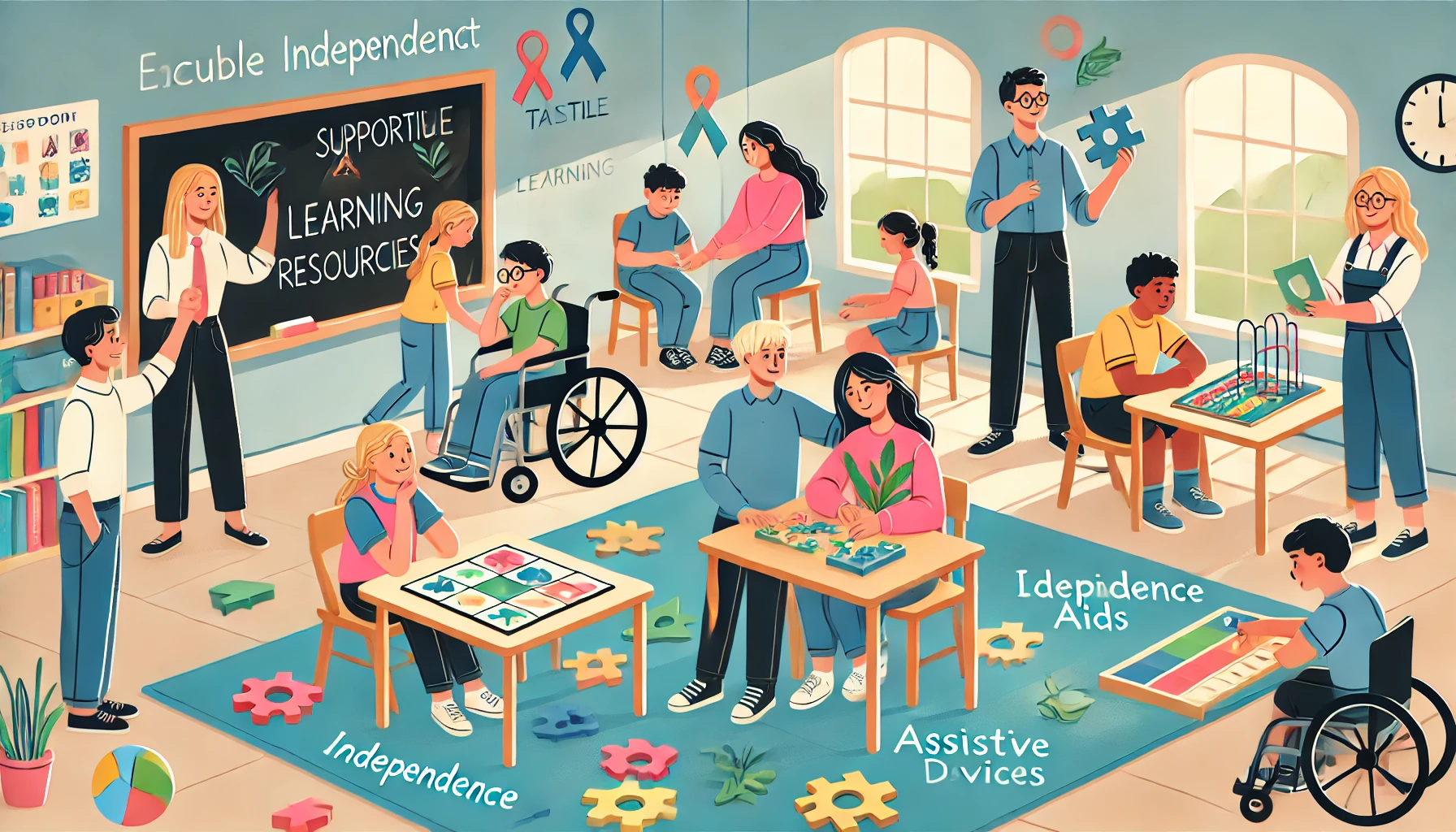
Positive School Community Impact
Crafting a school environment where students feel like they belong can totally lift their spirits and confidence. When students see themselves as important parts of their school, it makes them braver and more persistent. Get them involved in school happenings and decision-making, and they start to own their space and feel proud of who they are.
A school that celebrates and respects each student makes room for self-esteem to grow naturally. When kids see their unique strengths highlighted in a friendly setting, they start to believe in themselves more. In this kind of atmosphere, respecting differences becomes the norm, social bonds get stronger, and everybody feels empowered to shine.
Problem-Solving Opportunities
Let’s face it, kids love a challenge—and letting them tackle problems on their own can really pump up their self-esteem. When students solve things themselves, they feel more in control and capable. It’s like telling them, “You’ve got this,” and they believe it.
In schools that welcome different learning styles and abilities, problem-solving activities are keys to unlocking creativity and initiative. Trying out different solutions helps kids see their achievements, boosting both their confidence and motivation. As they grow more sure of their skills, students learn to love learning and push through obstacles with a positive attitude.
By encouraging a positive school buzz and unlocking problem-solving chances, teachers and parents can create a supportive scene that builds up students’ self-esteem, no matter their background or abilities. These tactics not only help kids perform better in school but also nurture their journey toward becoming well-rounded, happy individuals in an inclusive learning space.
Supporting Inclusive Teaching
When it comes to making sure every kid gets a shot, working hand in hand with parents and guardians is a game-changer. It’s all about making sure students, no matter their needs, find success and happiness. Plus, teaching kids how to handle their feelings and get along with others is a big part of keeping the classroom vibe positive and open to everyone.
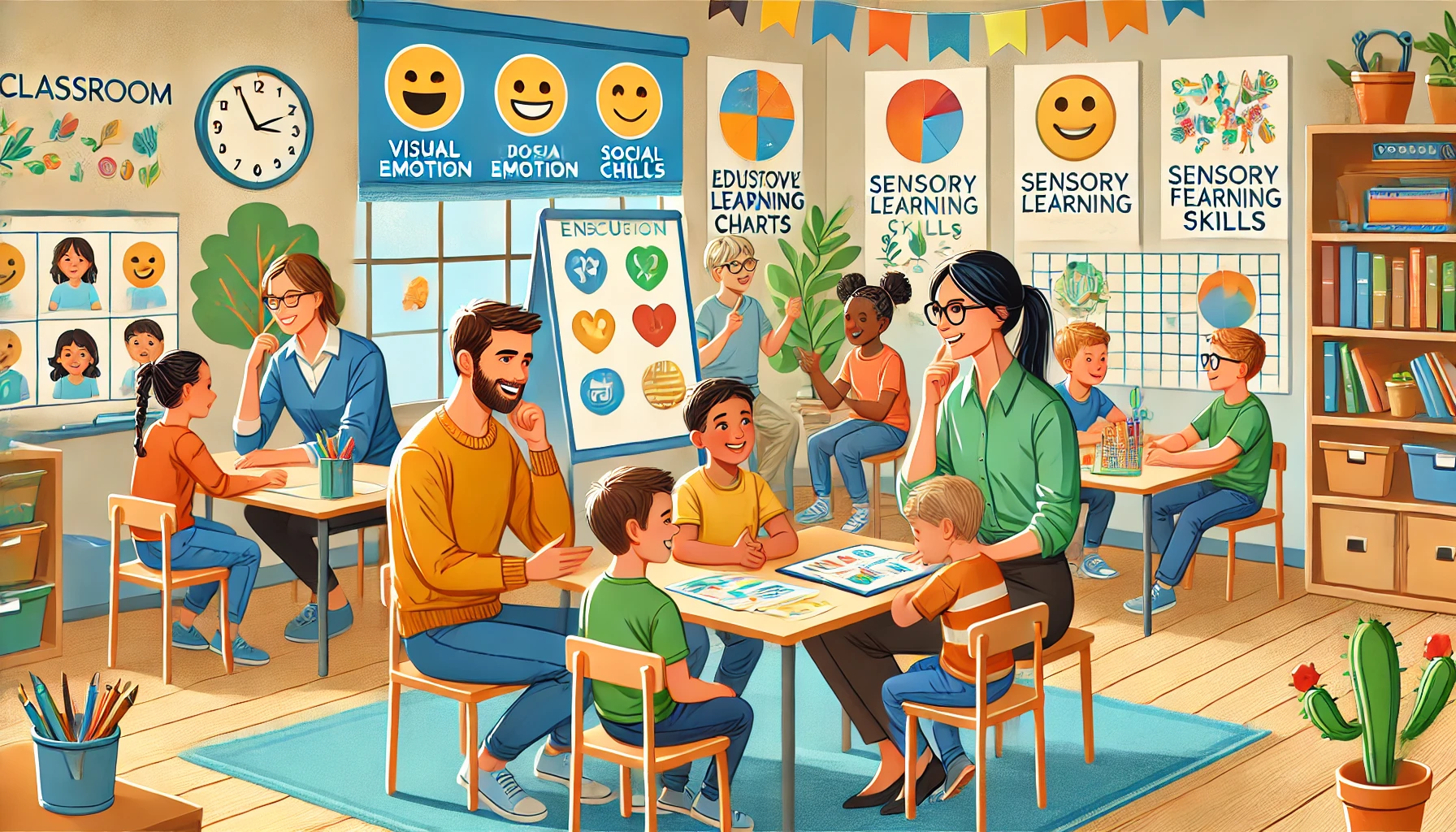
Collaborating with Parents
Parents are like the secret weapon in making inclusive education work. They’re the ones fighting to get the right programs and help in place for their kids. Teaming up with them gives teachers a peek into what makes each student tick, where they might struggle, and how they like to learn (Easterseals Arkansas). When parents and teachers keep the lines open and work together, it sets up a support squad that’s all about the success and happiness of the child.
One smart move is getting parents involved in setting goals that play to a student’s strengths. This way, everyone’s on the same page, helping the kid grow both at home and at school (NSW Department of Education). It’s about creating a solid support system that works in the student’s best interest.
Teaching Social and Emotional Skills
Teaching isn’t just about hitting the books; it’s about helping kids grow socially and emotionally too. When students dive into problem-solving, their self-esteem and toughness get a boost (Brookes Publishing). Giving them the reins to make decisions helps them feel in control of their learning adventure, building independence.
Getting students to help create classroom rules ensures they understand and follow them more willingly, building a classroom that works for everyone (Brookes Publishing). Involving students in rule-making encourages a sense of responsibility and respect in the group.
Having a safe, welcoming place is key in inclusive education. Supporting kids to build independence and confidence benefits both their involvement and interaction with classmates (NSW Department of Education). It’s all about creating a space that highlights individual strengths and encourages respect, helping build a school culture where everyone feels included and empowered.


